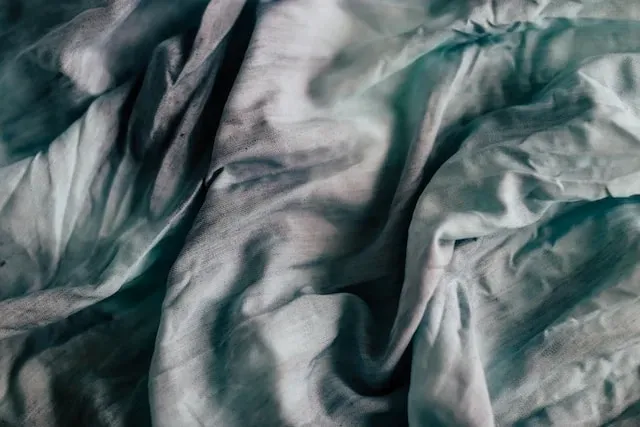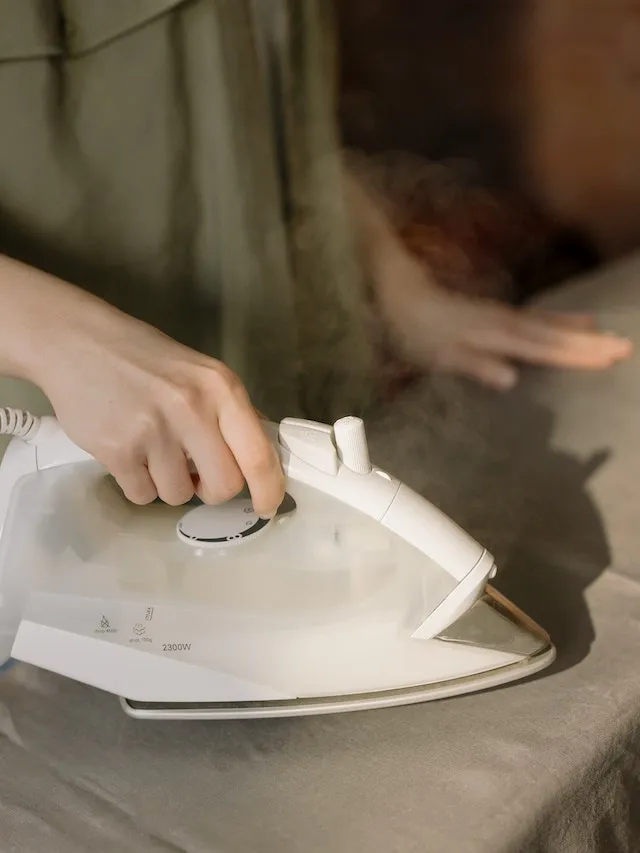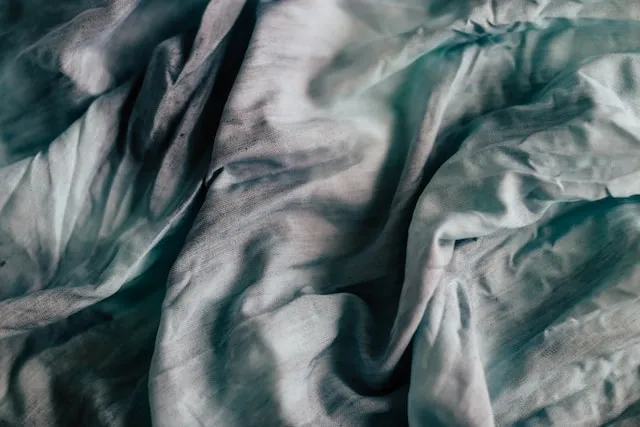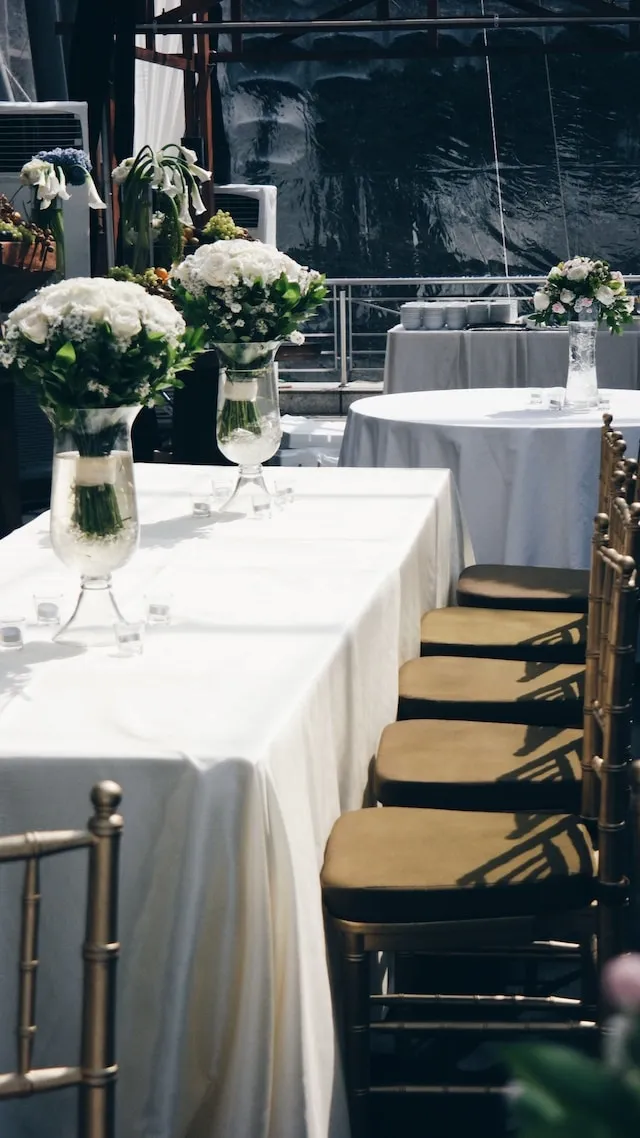How To Iron A Tablecloth Without Any Wrinkles
Ironing a tablecloth for flawless results may seem daunting, but it makes a big difference to your event or dining setup. In this guide, we will reveal the secrets of how to iron tablecloths for a wrinkle-free finish. Whether you're preparing for a special occasion or aiming to impress your guests, mastering the art of tablecloth ironing is a valuable skill. Join us as we explore essential tips and considerations to help you present a perfectly pressed tablecloth.

Key Takeaways
- You must prepare your tablecloth before ironing, then use a preheated iron and an ironing board for best results.
- Iron in sections, working outwards from the center.
- Professionals use specialist techniques and advanced equipment for optimal results.
- Ironing a tablecloth can make or break your table setting's presentation.
- Ironing is generally considered a superior approach to steaming, though steamers do have their merits.
- You must store your tablecloths properly after ironing to preserve the wrinkle-free appearance.
Table of contents
-
How To Iron A Tablecloth: Step-By-Step Guide
-
Why Ironing A Table Cover Is Essential
-
Ironing Vs. Steaming: Which Is Best For Tablecloths?
-
What Are The Benefits Of Ironing
-
What are The Benefits Of Steaming
-
Safety Tips You Should Follow While Ironing Table Covers
-
Travel & On-Site Setup For Wrinkle-Free Results
-
How To Store And Maintain Tablecloths Post-Ironing
How To Iron A Tablecloth: Step-By-Step Guide
Tablecloth ironing is a step-by-step process, and it's essential to follow each of these steps for the best results. It begins with preparing the tablecloth and then employing proper ironing techniques to ensure it looks its best. Here's a guide on how to iron a tablecloth to achieve a professional finish.

Preparing Your Tablecloth For Ironing
The first step in how to iron tablecloths is to clean the table cover. Tablecloths can typically be machine washed, but it's advisable to blot stains or spills with a stain remover before washing. Use a mild detergent and a cool setting to protect the fabric. When the wash is complete, do the following:
- Dry the tablecloth thoroughly. Air drying is best, and you should keep it out of direct sunlight to avoid sun bleaching. Do not proceed with ironing until the tablecloth is completely dry.
- Inspect the tablecloth for damage. If you find any frayed edges or tears, be sure to repair these issues before you iron.
- Smooth out any wrinkles by hand to minimize creases when you start ironing.
Make sure your ironing area is correctly set up. You need an ironing board with a cover, and you need a reliable iron. A steam function on the iron can be helpful.
When you order custom printed tablecloths from us, you get high-quality products made from robust fabrics like polyester or spandex. Not only are these stain-resistant, but they are also machine washable, fast-drying and easy to iron.
Ironing Techniques For Best Results
In tablecloth ironing, the technique you employ while ironing will determine whether you achieve a smooth, wrinkle-free finish or potentially damage the tablecloth. Here are the steps to follow:
- Preheat your iron to the appropriate temperature for your tablecloth. There should be a care label on the fabric that provides instructions about this.
- Lay the tablecloth flat on your ironing board, smoothing out major wrinkles by hand.
- If your iron has a steam setting, use it. Lightly dampening the tablecloth will make the wrinkle removal more effective.
- Begin ironing from the center of the tablecloth and work your way outwards. Use long, even strokes to prevent wrinkles from simply shifting to the edges.
- As you proceed, consider the tablecloth as a series of sections. By dividing it into manageable sections, you can get even coverage over the entirety of the table cover.
If you are dressing a table for a big occasion, it is crucial that you select the most suitable table cover for your event. But ironing your tablecloth is equally important in achieving the desired look for your purposes. By following the steps in this guide, you can make a significant impact on your table presentation.
How To Press Table Linen Like A Pro
It is possible to employ some advanced techniques for how to iron a tablecloth. These are some of the methods used by professionals to get the best possible finish. Consider the following tips:
- Press, don’t slide. To understand how to press table linen, you simply need to understand this approach. By pressing the iron down and lifting it, gradually covering the entire tablecloth, you reduce the risk of stretching or damaging the fabric.
- Pay particular attention when you are ironing the edges and the corners. With extra care, you can get a straight finish and avoid the edges from curling or becoming misshapen.
- Consider using a pressing cloth. This could be a cotton or linen tea towel that you place between the iron and the tablecloth as an extra measure to protect the fabric against scorching or burning.
- Check for residual wrinkles when you finish. If necessary, you can revisit problem areas.
- Once the table cover is completely wrinkle-free, hang it or fold it neatly to prevent the onset of any new wrinkles.
Professional ironing utilizes a number of specialist techniques, but the main difference is the level of precision and skill, and the quality of the equipment used. You may not have the professional equipment, but you can use the tips listed above to improve your DIY ironing job and get better presentation for your custom table covers.

Why Ironing A Table Cover Is Essential
It is crucial to understand how to iron a tablecloth when setting tables for events, dining, or any other purpose. This skill is a fundamental aspect of designing your table setting, and here are the reasons why:
- Aesthetics: If your table cover is full of wrinkles and creases, it looks lackluster and messy. This will reduce its visual appeal, which can be a big problem for giving guests or visitors a satisfactory experience.
- Professionalism: When your table presentation is neat and meticulous, it conveys an air of professionalism. Attention to detail gives off a positive message to guests or potential customers, so don’t ignore it.
- Comfort: With smooth table covers, you provide a comfortable surface for people to place items as well as their arms and hands.
- Branding: When you use custom table covers, like the ones we sell, you choose the colors and personalized design to convey your brand image. Ironing table covers provides the best possible presentation of those things, strengthening the impression of your brand.
Failing to iron your table covers is a big mistake, no matter who you are. In terms of the appearance of your setting, it is as fundamental as measuring your tables correctly to get the appropriate tablecloth size. Pay close attention to this so that you present a pleasing aesthetic and deliver a positive experience for everyone that attends your table.
Want to avoid frequent ironing with your tablecloth?
Create your own wrinkle-free tablecloth with logos by working with us and you will enjoy high-quality, low-maintenance table covers for any need or occasion.
Ironing Vs. Steaming: Which Is Best For Tablecloths?
Generally speaking, tablecloth ironing is preferable to steaming to get a wrinkle-free finish on your table cover. When you approach it with an iron, you have greater control over the heat and pressure that the fabric is exposed to. This is important for removing particularly stubborn wrinkles.
Steamers can be a great solution for a basic touch-up. They are particularly useful if you have limited time or you are working with particularly delicate fabrics. But you shouldn’t expect the same degree of precision or an equally smooth finish as you would get with an iron.
In the end, the choice between ironing and steaming is down to you. Our custom-fitted table covers are excellent for achieving the look you need for your occasion, and they are easy to maintain. We provide full instructions for ironing to ensure you get the best possible results every single time. The polyester, spandex or flannelette fabric will always create a strong impression when ironed to perfection.
What Are The Benefits Of Ironing
There are several advantages to ironing your tablecloths over steaming. For most, it is the preferred method of achieving a smooth, wrinkle-free appearance, as long as you know how to iron a tablecloth correctly. Here are the key advantages of ironing:
- Greater control: You have full control over the level of heat and pressure you apply to the fabric with an iron. This makes it easy to target each wrinkle in the way it needs.
- Versatility: Ironing is suitable for a wide range of fabrics, including polyester, cotton and silk, so many different types of tablecloths can be ironed.
- A professional finish: You will usually get a more polished finish when you choose ironing over steaming. This makes it ideal for formal events or any other occasion where aesthetics are of the essence.
- Lasting results: The finish achieved with ironing tends to have greater longevity tha steaming. This means the smooth appearance will last throughout your event.
There are merits to choosing a steamer, which we will explore in the next section. But ironing is the preferred choice for achieving a pristine look for your table covers. Having said that, the best results often come from irons that include a steam function, as demonstrated by this study.
Looking for tablecloths that are easy to iron at home?
With our custom polyester tablecloths, all you need is a working iron. They resist wrinkling and any minor creases that develop can easily be pressed.
Design yours todayWhat are The Benefits Of Steaming
There are specific benefits to choosing steaming over tablecloth ironing. It can even be the superior choice for certain situations, so let’s consider the advantages of using a steamer:
- It is gentle: Delicate fabrics like lace are less likely to be damaged by steamers as opposed to irons, as the heat is not applied directly.
- Suitable for vertical surfaces: The versatility of steamers means they can be used on vertical surfaces. This means they can clean drapes and upholstery, but you can also use them on a hanging tablecloth instead of laying it on an ironing board.
- Convenience: Steaming is a faster method than ironing, so it is preferred by individuals who have less time. It is also great for quick touch-ups when you are preparing at the last minute.
The speed and convenience of steaming are attractive features. And, for tablecloths made from sensitive fabrics, they can even be the better choice. But, for most circumstances, you will not achieve such a smooth, pristine finish with a steamer as you would with an iron.
Safety Tips You Should Follow While Ironing Table Covers
When learning how to iron tablecloths, it’s important to understand the safety precautions you should take. Irons get extremely hot, so there are some simple considerations to stay safe and protect the fabric of your table cover.
- Check the fabric care label. All our tablecloths are supplied with care labels and additional instructions to help you set your iron correctly and avoid heat damage to your customized table covers.
- Iron on a suitable surface. A stable, flat surface is important to ensure there are no accidents when ironing. An ironing board is the simplest solution for this.
- Protect your hands. You can wear an oven mitt or a heat-resistant glove to protect your hand while using the iron. This will ensure you are safe from burns.
- Be aware of cords. Your iron’s power cord should be kept out of the way at all times. In some cases, it can be a trip hazard, and it could also be damaged if exposed to the heat of the iron.
These are simple steps to use your iron safely when caring for your tablecloths. Safety is always an important consideration, so take extra care to follow these tips and protect both yourself and your tablecloths.

Do you attend trade shows or craft fairs regularly?
The last thing you want is to have to keep ironing tablecloths between events. With our wrinkle-free trade show table covers, your prayers are answered.
Travel & On-Site Setup For Wrinkle-Free Results
When you are transporting tablecloths to events or venues in 2025 and beyond, consider packing methods that help to preserve the hard work you did in ironing your cover. Let’s look at some top tips for this:
- Roll tablecloths around a cardboard tube instead of folding to prevent creases.
- For long-distance travel, you can use garment bags or hard-sided poster tubes lined with acid-free tissue paper to help protect the fabric’s shape.
- On arrival, hang tablecloths right away if possible.
- Carry compact travel irons or portable steamers (now available with fabric-specific settings) for quick touch-ups, addressing minor fixes without the need for a full ironing board.
Many event professionals also keep a small spray bottle of distilled water and a microfiber cloth to smooth stubborn creases on-site. Event timelines are always tightening and presentation expectations rising. With this in mind, it is crucial to have a strategy to maintain wrinkle-free event tablecloths in transit to get the best possible outcomes as exhibitors, caterers, and hosts.
How To Store And Maintain Tablecloths Post-Ironing
Proper storage of your tablecloths is important for maintaining their smooth, crisp appearance after ironing. If you don’t store your tablecloths correctly, they will develop creases and could even be damaged, making them unsuitable for use the next time you need them.
Here are some tips to maintain your tablecloths post-ironing:
- Fold them properly. There are correct methods for folding tablecloths of different shapes, so pay close attention to the method and try to follow existing creases to prevent new ones from forming.
- Place them in a storage bag. We supply tablecloths with fabric storage bags that offer an extra degree of protection so your table covers remain in pristine condition.
- Store them in a cool, dry place. Whether you choose a cupboard, closet, drawer, or chest, you must ensure your table covers are stored away from direct sunlight. They should also be completely dry and shielded from dust.
- Avoid excessive pressure. Don’t overload anything with stored tablecloths, as the tight packing will cause wrinkles to form.
This is a basic guide to storing your tablecloths correctly. Once you know how to iron tablecloths, you will want to ensure you preserve the results of your hard work. Effective storage is essential for this.
Make a lasting impression with our high-quality, eye-catching designs
Enhance your brandÔÇÖs presence at your next event with our stunning, personalized table covers
Order now and elevate your brand in style.
Make Your Custom Table CoversFrequently Asked Questions About How To Iron A Tablecloth
How To Iron A Tablecloth?
After washing and thoroughly drying your tablecloth, you should lay it on an ironing board. Using a preheated iron, start at the center and iron outwards, dividing the tablecloth into sections.
Why Ironing A Table Cover Is Essential
Tablecloth ironing ensures you have the best possible presentation of your table covers. It can make or break a table setting, so don’t ignore the importance of ironing.
How To Store And Maintain Tablecloths Post-Ironing
After ironing, tablecloths must be carefully folded and put into storage in a cool, dry space away from direct sunlight.